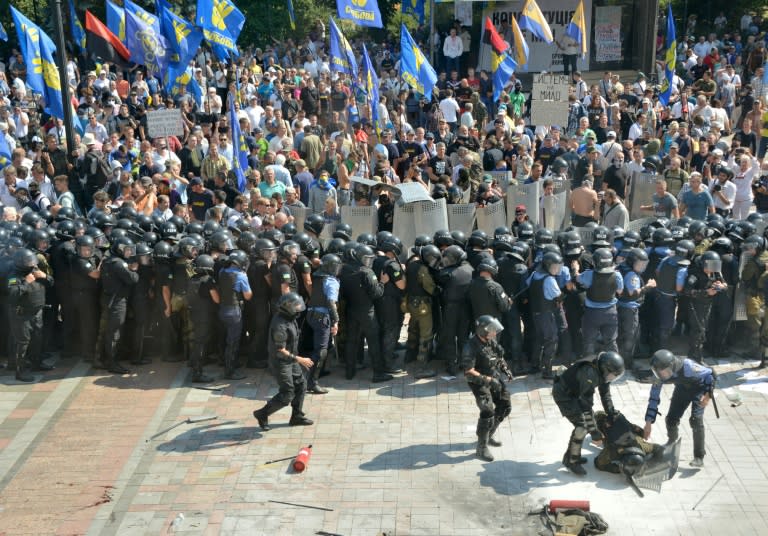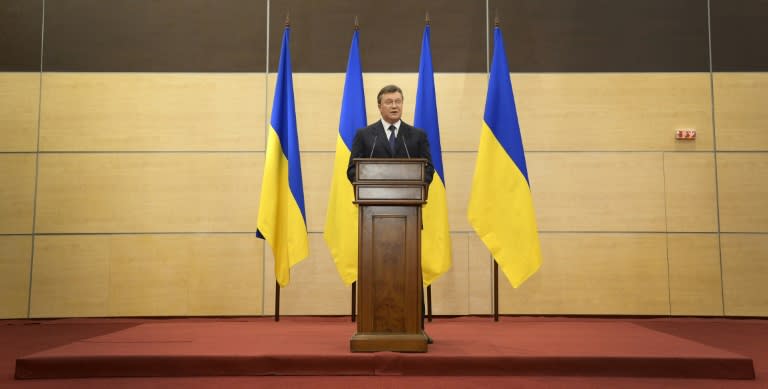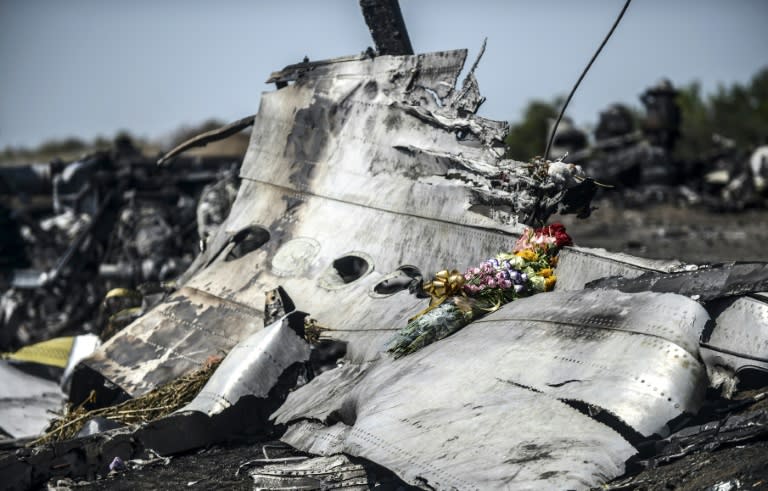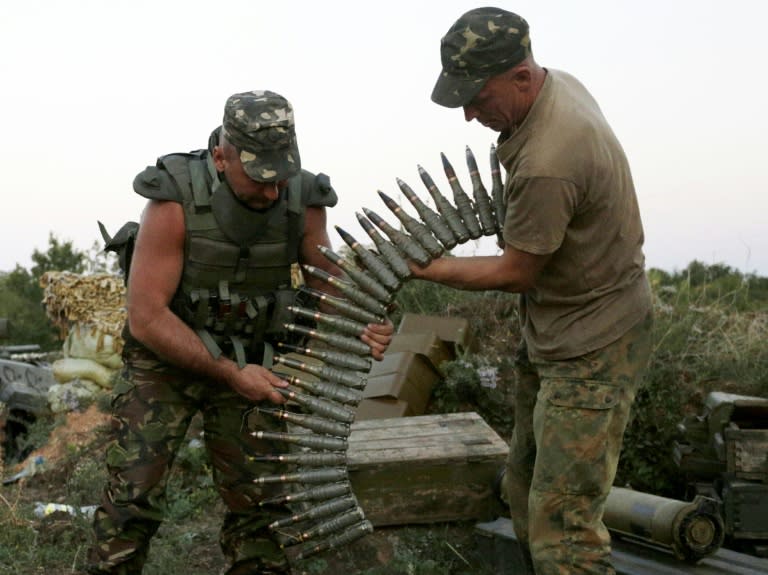Key dates in Ukraine since Yanukovych ouster
Ukraine has suffered 18 months of turmoil since pro-Russian president Viktor Yanukovych was ousted in a popular revolt last year, an event that set in train a separatist insurgency in the industrial east. Here are key dates in a conflict that has triggered the worst standoff in East-West relations since the Cold War: - Yanukovych ousted - February 22, 2014: Kremlin-backed Yanukovych is ousted by parliament and flees to Russia after three months of pro-European demonstrations. The security forces launched a crackdown on Kiev's Independence Square, or Maidan, on February 18. More than 100 were killed in three days. The unrest was triggered by the government's decision to suspend talks on an association agreement with the European Union in favour of closer ties with Moscow. On May 25, pro-Western billionaire, Petro Poroshenko, is elected president. - Crimea annexed - February 27/28: Russian troops and pro-Moscow forces begin seizing ports and cities on Ukraine's Black Sea peninsula of Crimea. March 16: Crimean residents, mostly Russian speakers, vote to join Russia in a referendum that Kiev and the West do not recognise. On March 20, Russia's parliament ratifies a treaty incorporating Crimea into Russia. The "annexation", denounced by Kiev and the West sparks the worst diplomatic crisis between the West and Russia since the fall of the Soviet Union. - Separatist rebellion in the east - April 6: Pro-Moscow demonstrators seize government buildings in towns and cities in Ukraine's east, including Donetsk and Lugansk. April 13: Kiev announces the launch of an "anti-terrorist" operation in the east to reclaim the areas controlled by the separatists. May 11: Voters back independence in referendums in Lugansk and Donetsk, rejected as illegitimate by Kiev and the West. July 17: Malaysia Airlines flight MH17 is shot down, apparently by a missile, over rebel-held territory, killing 298 people. Kiev and the rebels blame each other. July 29: The EU and the United States broaden sanctions on Russia, which later bans most US and EU food imports. The Western sanctions are extended by six months in June 2015. Kiev and the West accuse Russia of backing the separatists by supplying them with arms, troops and military advisers, claims Moscow denies. August 25: Rebels mount a counter-offensive in the southeast, reportedly backed by Russian troops and heavy weapons, and inflicting a series of defeats on Ukrainian troops. More than 360 soldiers are killed in the eastern Ukrainian town of Ilovaysk in the space of a few days, says Kiev. - The Minsk I and II accords - September 5: Ceasefire signed in the Belarussian capital Minsk between Kiev and the rebels. In mid-October, new negotiations fail and violence resumes. October 26: Pro-Western parties win big in a general election boycotted in the east. On November 2 separatists win leadership elections in the east that Kiev and the West refuse to recognise. February 12, 2015: The Ukraine government and rebels agree to a "Minsk II" peace roadmap, backed by the leaders of France, Germany and Russia. The ceasefire deal strengthens the provisions of the Minsk I agreement and enlarging the buffer zone from which heavy weapons should be withdrawn. The fragile truce leads to a marked de-escalation but is punctuated on an almost daily basis by deadly incidents. The fighting has left more than 6,800 dead since April, 2014. - Clashes before parliament - August 31: As lawmakers give initial backing to reforms granting more autonomy to pro-Russian separatists, fierce clashes erupt between police and nationalist demonstrators outside the Ukrainian parliament. A member of the National Guard dies in the worst unrest in Kiev since Yanukovych was ousted, while around 100 people, mainly police, are wounded.





